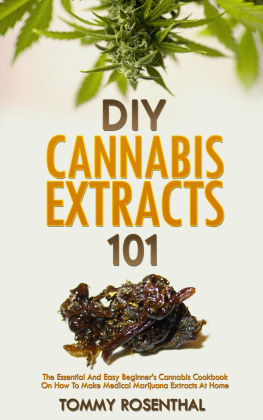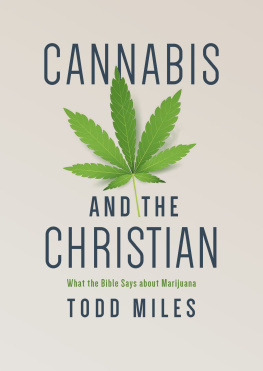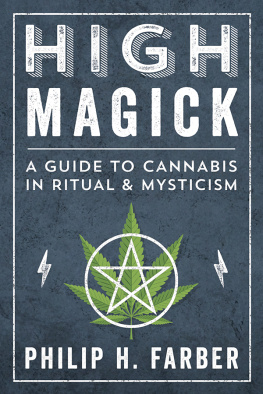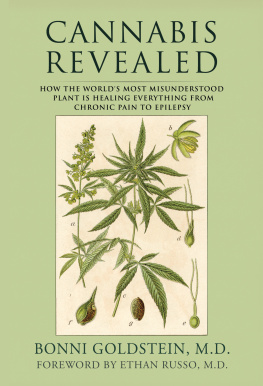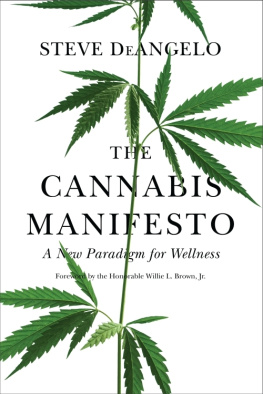Franjo Grotenhermen - Cannabis Healing
Here you can read online Franjo Grotenhermen - Cannabis Healing full text of the book (entire story) in english for free. Download pdf and epub, get meaning, cover and reviews about this ebook. year: 2020, publisher: Inner Traditions/Bear & Company, genre: Religion. Description of the work, (preface) as well as reviews are available. Best literature library LitArk.com created for fans of good reading and offers a wide selection of genres:
Romance novel
Science fiction
Adventure
Detective
Science
History
Home and family
Prose
Art
Politics
Computer
Non-fiction
Religion
Business
Children
Humor
Choose a favorite category and find really read worthwhile books. Enjoy immersion in the world of imagination, feel the emotions of the characters or learn something new for yourself, make an fascinating discovery.

- Book:Cannabis Healing
- Author:
- Publisher:Inner Traditions/Bear & Company
- Genre:
- Year:2020
- Rating:3 / 5
- Favourites:Add to favourites
- Your mark:
- 60
- 1
- 2
- 3
- 4
- 5
Cannabis Healing: summary, description and annotation
We offer to read an annotation, description, summary or preface (depends on what the author of the book "Cannabis Healing" wrote himself). If you haven't found the necessary information about the book — write in the comments, we will try to find it.
Cannabis Healing — read online for free the complete book (whole text) full work
Below is the text of the book, divided by pages. System saving the place of the last page read, allows you to conveniently read the book "Cannabis Healing" online for free, without having to search again every time where you left off. Put a bookmark, and you can go to the page where you finished reading at any time.
Font size:
Interval:
Bookmark:
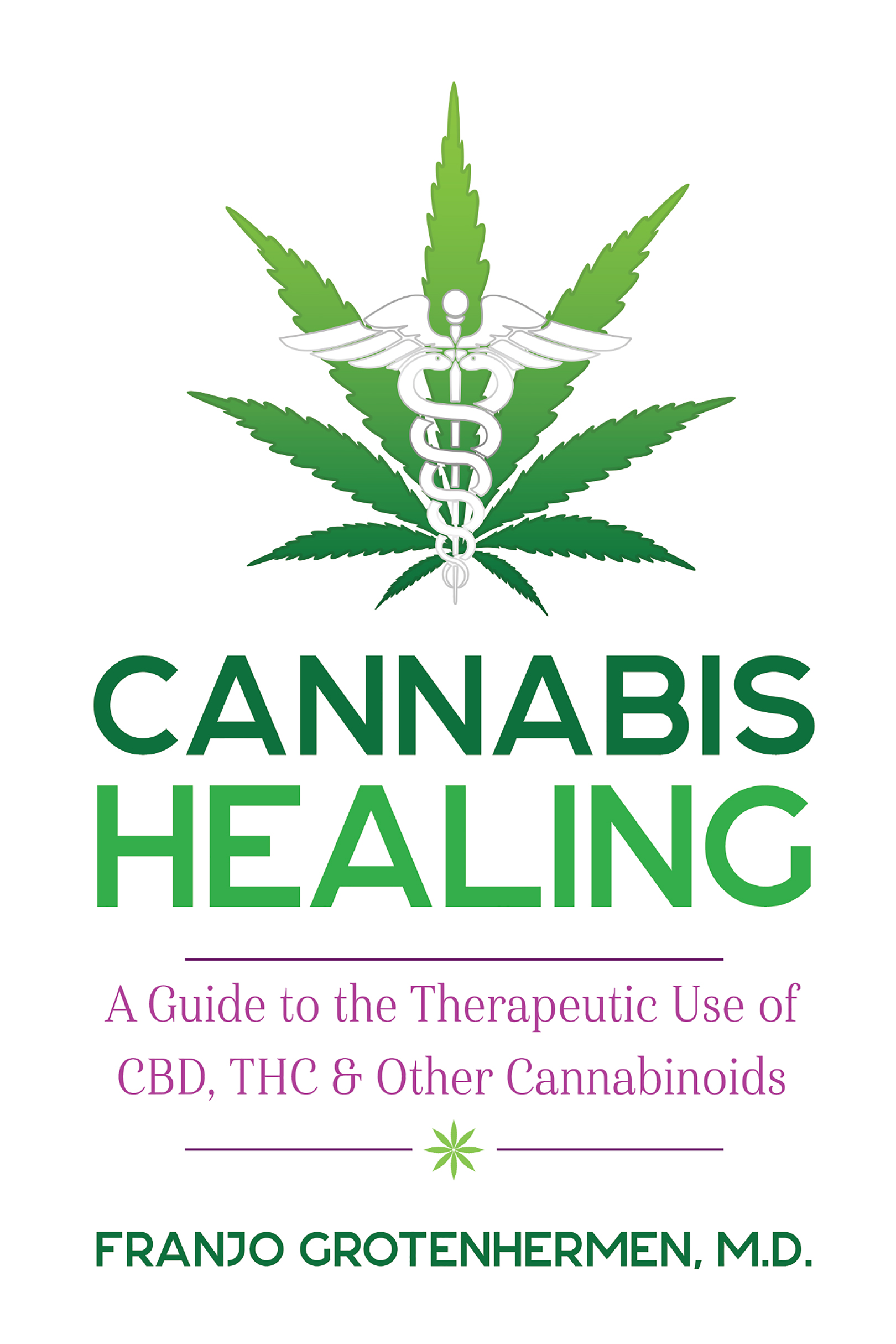
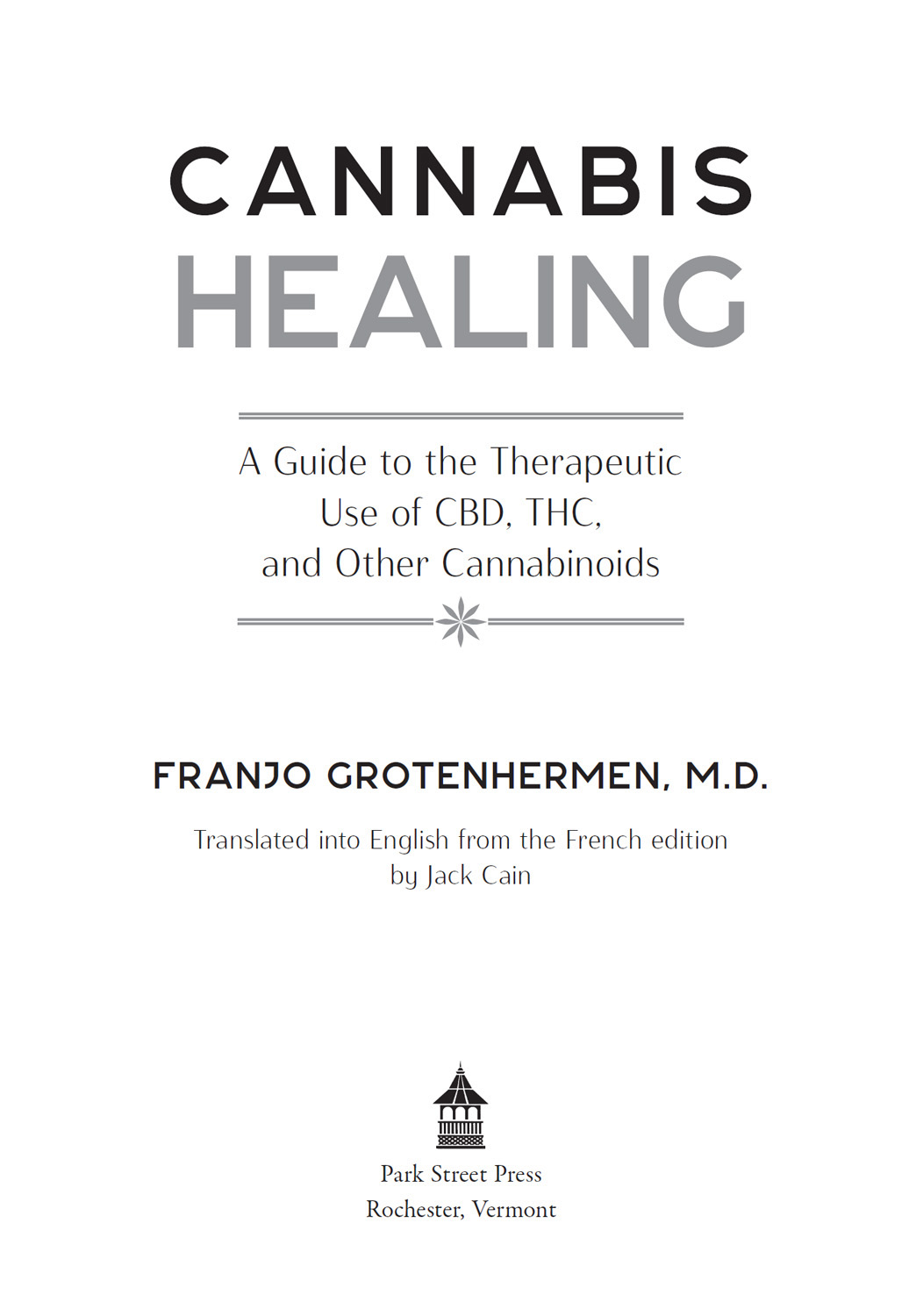
Preface to the English Edition
M any patients who use medical cannabis describe it as the best medication theyve ever used. Certain individuals using cannabinoids manage to finally find relief when all other treatment has failed. In spite of this, cannabis and the cannabinoids are not miracle drugs. In fact, many other patients are disappointed because cannabis products dont help them or because the side effects are too severe for them. Those suffering from an illness or symptoms for which cannabis flowers, extracts, CBD, or THC may provide a therapeutic advantage need to find out to what extent they can benefit from cannabis products. They need to be patient in determining their personal dosage. The basic principle in dose finding is to start low, go slow. Thus, newcomers can avoid strong unwanted side effects and slowly find out their individual dose.
The medical usefulness of cannabis, and of the cannabinoids as a separate category, is now very widely accepted by the scientific community. On the other hand, the perception of it by doctors and politicians varies considerably from one country to the next and from state to state in the United States. But the trend is clear, and every year more countries change their laws to allow or improve the medical availability of cannabis products for their citizens. In many countriessuch as Israel, Canada, most states of the U.S., many European countries (including Germany, the Netherlands, Italy, and the Czech Republic), an increasing number of Latin American countries (including Uruguay, Mexico, Argentina, and Colombia), and Thailand, as the first Asian countryrecognize and accept the considerable therapeutic potential of cannabis as well as various degrees of access to it. Australia and New Zealand are taking major steps in this regard. Some African countries have also been discussing legalizing the medical use of cannabis, including South Africa, Morocco, and Zambia. However, the climate and the legal situation continue to be problematic for patients in many other countries, such as France, Greece, Russia, many African countries, and most Asian countries, including Japan and China. As rational debate is just beginning in these countries, legalization may be delayed by more than ten years.
In this book, I present practical information about cannabis, addressed specifically to patients and doctors, which I hope will help to promote reasonable debate. Patients struck by serious illness who use cannabis-derived products, wherever they may reside, should never be treated as criminals because they find relief thanks to cannabinoids.
I am delighted that this English edition will soon be available following the editions in German, Italian, Spanish, French, and Czech.
FRANJO GROTENHERMEN, M.D.
STEINHEIM, GERMANY, MARCH 2020
History of the Therapeutic Uses of Cannabis
C annabis is a genus of herbaceous flowering plants in the family Cannabinaceae. There is some dispute whether the three main types ofCannabisC. sativa, C. indica, and C. ruderalisare three separate species or different strains or varieties of the same species. In the United States today, the term hemp is used to refer to varieties of cannabis that contain 0.3 percent or less of tetrahydrocannabinol (THC), the plants main psychoactive constitutent, whereas the common term marijuana refers to cannabis that has more than 0.3 percent of THC and can induce euphoric effects in users. In most European countries, the threshold is 0.2 percent, and in Switzerland it is 0.1 percent. However, both plants are classified as Cannabis sativa L.
The dried leaves and flowering tips of the plant, high in THC, and the resin extracted from the plant have gone by many names over the millennia. In Spanish, cannabis is commonly called hierba or Mara; names coming from various other cultures for cannabis preparations are bhang, charas, dagga, khif, ganja, diamba, maconha, canapa, and chamvre. In English, common slang terms are grass, weed, shit, and pot.
Today, we believe that the cultivation of cannabis in Asia goes back many thousands of years. Before the common era, Western Asia was the departure point for the diffusion of cannabis to Europe and the African continent and then, in the sixteenth and seventeenth centuries, to North, Central, and South America.
For a very long time, people have been using both the nonpsycho-active and psychoactive varieties of cannabis. Hemp has been used for its fibers and for its seeds. Hempseeds, which have great nutritional value, are used in the preparation of many dishes. Since long ago, hemp fiber, well known for its great versatility, has been used to make paper, fabric, and rope. The Phoenicians who traversed the Mediterranean three thousand years ago, as well as the Egyptians in the time of the pharaohs, used this very tough material to construct their sails and fishing nets. In China, the first paper products (an invention that was kept secret for a long time) were made with hemp several centuries before the beginning of the common era. But it was only in the ninth century that the Arabs introduced it to the West, where it replaced papyrus and clay tablets. Gutenbergs first Bible, like all the other books of that time, was printed on paper made from a mixture of hemp and flax.
The psychoactive components of the plant were also known before the common era and were already used in healing rites and ceremonies in numerous cultures. Cannabis was identifed as a sacred plant in the Vedas, religious Hindu texts that date back to about 1500 to 1300 BCE. The earliest written reference to the healing properties of cannabis is found in the Rh-Ya, a Chinese pharmacopiea of about 1500 BCE. As for its numerous therapeutic properties, now rediscovered today, such properties were certainly known in the Middle East, from whence the traditional applications used in treating certain neurological disorders were transmitted to us. Today, we can still profit from this experience that is hundreds if not thousands of years old.
In the eighteenth century, Europeans traveling in Arab countries and in Asia discovered cannabis containing high levels of THC. The term Indian hemp was introduced for the first time by the German naturalist Georg Eberhard Rumpf (16271702). However, before the nineteenth century, Indian hemp was not much used in medicine in either Europe or America, and most often, it was met with a certain skepticism.
In 1823, an article on the successful use of Indian hemp in the treatment of whooping cough appeared in the Hufeland Journal: The extract of cannabis was used at the Polyclinic in Berlin in the emergency treatment of a patient suffering from a convulsive cough. The same extract in powder form, mixed with sugar, in a dose of 4 grams was prescribed daily (Dierbach 1828, 420). In 1830, the therapeutic application of Indian hemp was described in detail, for the first time in Europe, by Theodor Friedrich Ludwig Nees von Esenbeck (17871837), professor of pharmacology and botany at the University of Bonn, Germany. Certain doctors, notably Samuel Hahnemann (17551843), prescribed cannabis extract for treating numerous cases of nervous disorders where medical practitioners would more usually have used opium or Hyoscyamus niger (henbane). He found that cannabis had fewer side effects than the two alternatives.
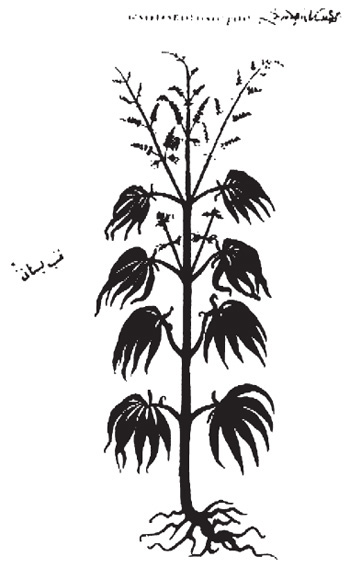
Font size:
Interval:
Bookmark:
Similar books «Cannabis Healing»
Look at similar books to Cannabis Healing. We have selected literature similar in name and meaning in the hope of providing readers with more options to find new, interesting, not yet read works.
Discussion, reviews of the book Cannabis Healing and just readers' own opinions. Leave your comments, write what you think about the work, its meaning or the main characters. Specify what exactly you liked and what you didn't like, and why you think so.


